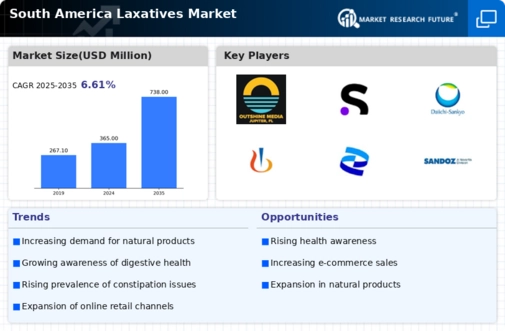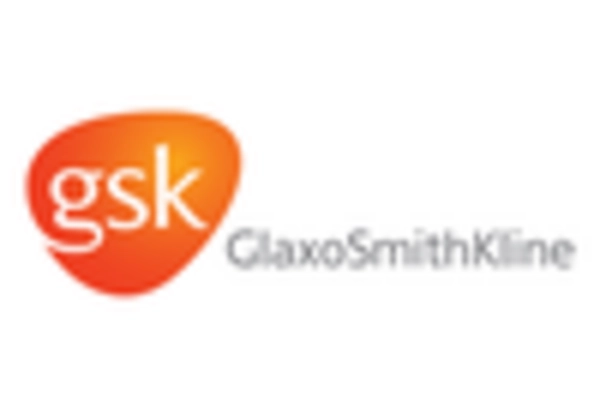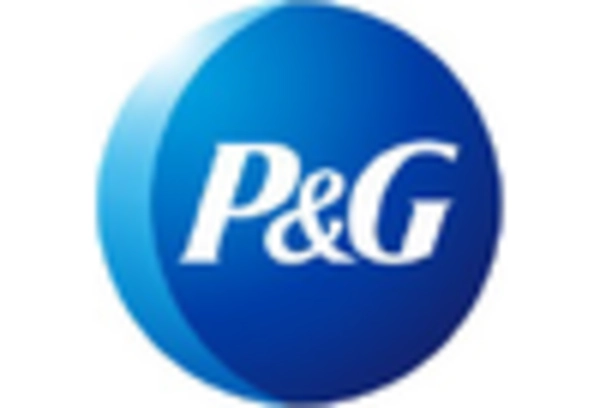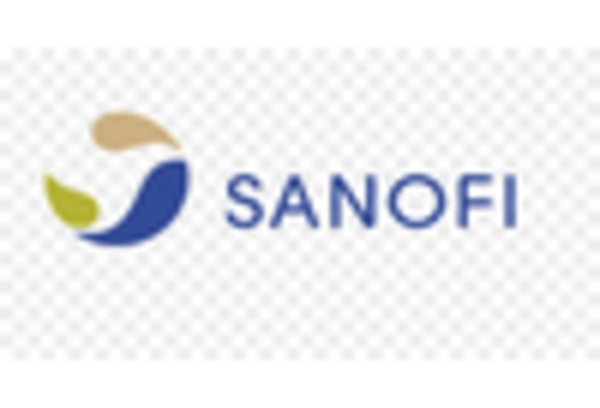Aging Population
The demographic shift towards an older population in South America significantly influences the laxatives market. As individuals age, they often experience a decline in gastrointestinal motility, leading to higher rates of constipation. Reports suggest that the elderly population, particularly those over 65 years, is more susceptible to digestive issues, with estimates indicating that around 30-40% of older adults face constipation regularly. This demographic trend is likely to drive the demand for laxatives, as caregivers and healthcare providers increasingly recommend these products to manage symptoms. The laxatives market is thus poised for growth, as manufacturers develop formulations tailored to the needs of older consumers, including gentler and more natural options.
Rising Health Consciousness
There is a notable increase in health consciousness among consumers in South America, which is positively impacting the laxatives market. As individuals become more aware of the importance of digestive health, they are more inclined to seek out laxative products that align with their wellness goals. This trend is reflected in the growing preference for natural and organic laxatives, which are perceived as safer alternatives to traditional options. Market data indicates that sales of natural laxatives have surged by approximately 25% in recent years, highlighting a shift in consumer preferences. This heightened awareness and demand for health-oriented products are likely to continue driving the laxatives market forward.
Expansion of E-commerce Platforms
The rapid growth of e-commerce platforms in South America is transforming the way consumers access laxative products. Online shopping offers convenience and discretion, allowing individuals to purchase laxatives without the stigma often associated with digestive issues. This shift is particularly relevant in urban areas, where busy lifestyles make online shopping an attractive option. Data suggests that e-commerce sales of health and wellness products, including laxatives, have increased by over 30% in the past year. As more consumers turn to online platforms for their healthcare needs, the laxatives market is likely to benefit from this trend, with manufacturers and retailers enhancing their online presence to capture this growing segment.
Innovations in Product Formulations
Innovations in product formulations are driving advancements in the laxatives market in South America. Manufacturers are increasingly focusing on developing new and improved laxative products that cater to diverse consumer needs. This includes the introduction of formulations that combine laxatives with probiotics, fiber, and other digestive health ingredients. Such innovations not only enhance the effectiveness of laxatives but also appeal to health-conscious consumers seeking multifunctional products. Market Research Future indicates that the introduction of these innovative products has led to a 20% increase in sales within the laxatives market. As companies continue to invest in research and development, the market is expected to witness further growth, driven by the demand for effective and holistic digestive health solutions.
Increasing Prevalence of Constipation
The rising incidence of constipation in South America is a primary driver for the laxatives market. Studies indicate that approximately 15-20% of the population experiences chronic constipation, leading to a growing demand for laxative products. This condition is often exacerbated by dietary habits, sedentary lifestyles, and inadequate fluid intake. As awareness of digestive health increases, consumers are more likely to seek solutions, thereby propelling the laxatives market. The healthcare sector is also responding with educational campaigns aimed at promoting awareness of constipation and its management, which further stimulates market growth. Consequently, the laxatives market is expected to expand as more individuals seek effective remedies for this common ailment.


















Leave a Comment